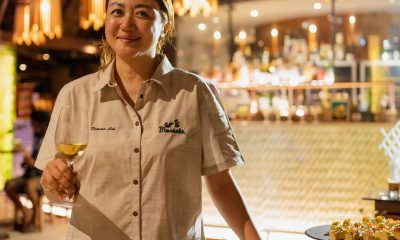Action
Coral conservation in Maldives with Constance Hotels

Ever wondered what’s going on underneath the sparkling Maldives ocean? From mammals to molluscs, the marine life that inhabits the Maldives water is diverse and is held together by oceans coral reefs.
These coral reefs provide an ecosystem for life underwater, protect coastal areas by reducing the power of waves hitting the coast, and provide a crucial source of income for millions of people.
Did you know that coral reefs are one of the most valuable ecosystems on the planet?
They are capable of producing half of the oxygen we breathe or creating the biggest structure made by living organisms that can be seen from space. Their complex tridimensional structure harbours the biggest amount of marine species per unit area when compared to other marine ecosystems.
It is like a small busy city where other animals and plants find shelter, food, or a partner to mate.
Coral reefs also support fishing and tourism industries, protect the shoreline and help fight climate change, among other key functions.
The most effective measure to safeguard these ecosystems and all the organisms that depend on them is the establishment of marine protected areas (MPAs).
Besides, the development of coral restoration projects worldwide, like the one in Constance Moofushi, contributes to this regard at a local scale.

The coral restoration project at Constance Moofushi started at the end of 2017 in partnership with Reefscapers, the leading coral restoration company in the Maldives.
The target is to help restore the natural coral reefs surrounding the island by growing corals on iron frames. The type of growing form used for the project is the branching type. This type grows faster and it is easier to collect than the massive one.
The small coral pieces are attached to the bars of the frames with cable ties and generally start growing after a few weeks. In approximately three-years’ time, and if no major events disturb the corals (for instance, a wave of coral bleaching), the whole structure will be covered by colonies, which then become the new source for more coral planting.

The frame becomes part of the natural reef but pieces of colonies can also be detached from it and placed back onto the degraded reef.
Guests visiting the resort are the main sponsors of the project. Purchasing the frames and attaching the corals before placing them in the water. All this of course under the supervision of our resident marine biologist in charge of the conservation project.
The small monetary benefits of the project are reinvested. For instance, planting more frames into the sea, inviting specialists in the field to the resort or organising a coral conservation day for local kids.
Moreover, the project has also a small social component because the frames are constructed in a local island called Fulhadhoo in Baa atoll by fishermen. Currently, there are 135 frames in the water divided into two main areas: the drop-off and the arrival jetty.
Have you seen any of these coral restoration projects during your travels?
How long does it take for corals to recover?
When corals are stressed, for instance, if the temperature of the ocean rises, they can turn white (bleaching). The reason for this change is the loss of the microscopic algae living inside of them (zooxanthellae) due to the stressful conditions.
Zooxanthellae are not only responsible for the amazing colours of the corals but provide most of the food corals need to survive and grow. The survival of coral reefs depends on their resistance to bleaching, tolerance to survive a beaching event and the level of recovery they display.
Every coral colony has a different set of genes and is surrounded by different environmental factors; hence, it becomes very difficult to predict the outcome from a bleaching event.

Nowadays, the biggest problem is the increased frequency of bleaching events due to climate change, combined with other stressing factors such as ocean acidification or water pollution. If the stressor is removed in a short period, corals are potentially capable of uptaking new algae and survive.
But if the stressor stays for a long time, it becomes hard for corals to go back to normal and survive.
Even if they survive a bleaching event, the overall health and capacity of the reef to reproduce is hindered.
Some experts point out that after following a major bleaching event, it takes around 5-10 years for corals to fully recover.
But as mentioned above, this is quite difficult to predict and it can never be assured it will come back to the previous state.
It may be a long road ahead, but let’s do all we can to help these corals bloom back into their prime condition.
Does coral need sunlight to grow?
Many corals, including all the reef-building corals (those capable of creating the living limestone structures called coral reefs), have microscopic unicellular algae (like “small plants”, called zooxanthellae) living within their tissues in a very successful relationship know as symbiosis. Both organisms benefit from it, with the algae finding shelter in the body of the coral and the coral getting food and oxygen from the algae.
We must remember that all plants (including the algae) photosynthesise, a process by which they absorb carbon dioxide and nutrients to build up sugars and release oxygen.

Since algae need sunlight to do the photosynthesis and survive, we could say that indeed corals need light too. The most interesting fact is that the algae cover almost 70 per cent of the coral needs. Hence, without this relationship between them, there would be no coral reefs in the world.
This also explains why corals thrive in poor waters low in nutrients. Corals get the rest 30 per cent of the food by sieving seawater with their tentacles. We don’t know about you but our mind is blown!
What’s the rarest coral?

In 2010, during an underwater survey in the remote North Pacific, specifically in the Arno atoll in the Marshall Islands, scientists discovered what could be the world’s rarest coral.
It looked very similar to the critically endangered Elkhorn coral (Acropora palmata) of the Atlantic Ocean, but genetic analyses made clear it was the Pacific Elkhorn coral (Acropora rotumana).
This species had not been spotted in over 100 years and it could be the same once described in Fiji islands in 1898, but no reliable data was gathered at that time.
If you spot this coral, make sure you get a snap of it!
What’s the role of Constance Moofushi’s marine biologists?
The marine biologist at Constance Moofushi, Estrella Gonzalez Tapias, manages the coral restoration project, gives four talks a week on marine life in the Maldives with a focus on conservation (manta rays, sea turtles, whale sharks and coral reefs), leads twice a week “Introduction to Moofushi reef”, and a presentation on marine life of the surrounding reefs.
She also takes guests on guided snorkelling trips to spot as much marine life as possible, joins as many whale shark trips as possible to enhance the guest experience and answer questions. She is also always around to meet guests and exchange knowledge with them.
So be sure to ask her any marine questions you have!

Estrella and Constance Moofushi’s team are also working on a number of projects. These include starting their own sea turtle database, to study the cetacean population near Moofushi, publishing their own guide to the reefs with photographs or broaden the resort’s collaboration with local NGOs such as Olive Ridley Project or Manta Trust! Talk about a dream job!
Have you ever been part of a coral restoration project? Are you feeling inspired to explore more of the ocean?
Action
A season of discovery at Alila Kothaifaru Maldives
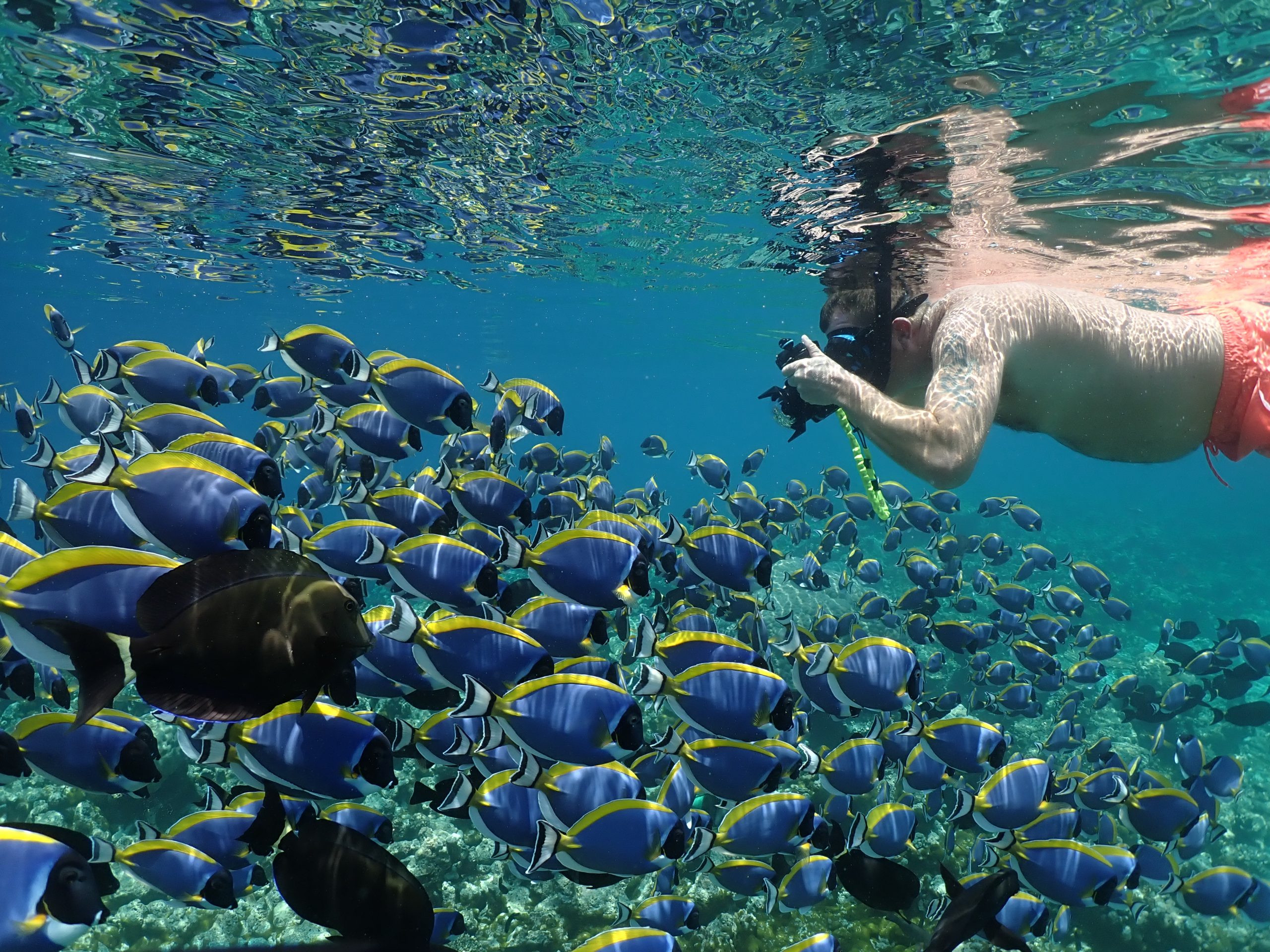
Alila Kothaifaru Maldives continues to offer unforgettable encounters as manta season begins in the Raa Atoll, with recent marine sightings delighting guests and setting an exciting tone for the months ahead. This past week, a large playful group of dolphins cruised very close along the resort’s house reef, while a rare ornate eagle ray was spotted for several days gliding gracefully through the lagoon — remarkable moments that highlight the rich biodiversity surrounding the island.
These encounters are made all the more special by the resort’s commitment to preserving the natural serenity of its marine environment. At Alila Kothaifaru Maldives, sustainability goes beyond words — it shapes every experience offered through the watersports and dive center. By focusing exclusively on non-motorized watersports, the resort helps protect delicate reefs, safeguard marine life, and reduce noise and pollution, ensuring that guests experience the ocean in its purest, most harmonious form.
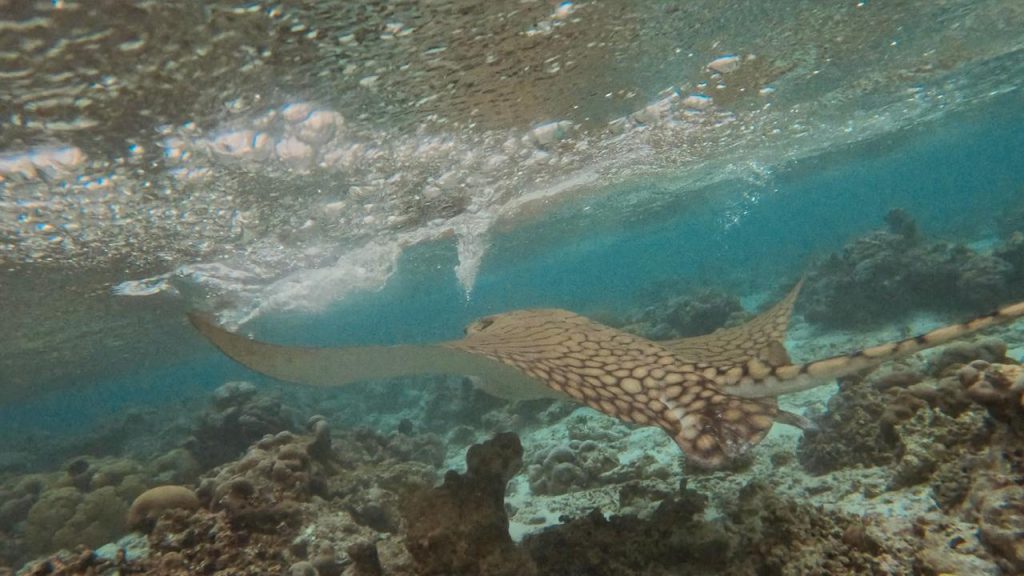
Encounter Majestic Mantas in Raa Atoll
While the resort offers a wide range of aquatic experiences to explore the atoll’s vibrant marine world, now is the ideal time to encounter one of its most majestic creatures – the manta ray. Although mantas can be seen all year round, sightings peak in the Raa Atoll during this season, (December to May) as they migrate in numbers, drawn by plankton-rich waters and multiple cleaning stations.
In the waters surrounding the resort, guests can embark on dive excursions at shallow depths of 10–15 meters, offering remarkable opportunities to see groups of mantas gliding gracefully, as well as observe their social interactions and cleaning behavior. Enriched by the dive team’s insightful storytelling, each experience becomes even more meaningful.
Early morning dives often provide the most rewarding encounters, while beginner and non-divers can enjoy guided private snorkel trips — a peaceful way to witness these gentle giants from the surface.
From kayaking and stand-up paddleboarding to sailing, snorkeling, and diving, every ocean adventure at Alila Kothaifaru Maldives is thoughtfully designed to inspire a deeper connection with the sea while respecting its fragile beauty. This mindful approach ensures that Raa Atoll’s underwater paradise can continue to thrive for generations to come.
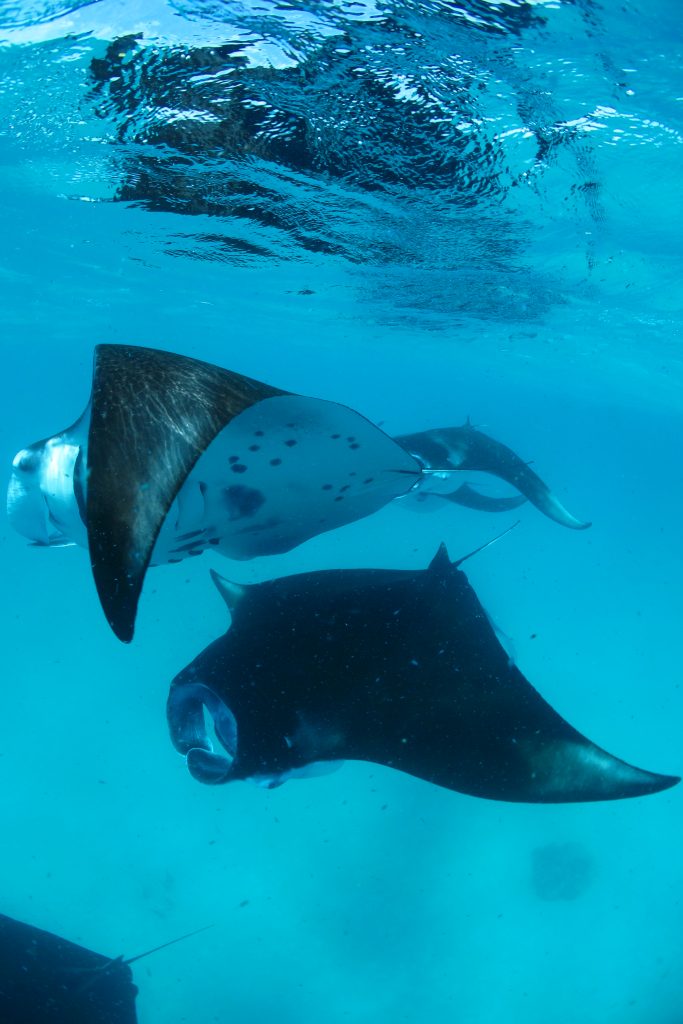
Alila Kothaifaru Maldives Welcomes New Euro-Divers Team
Further enhancing these experiences, Alila Kothaifaru Maldives is delighted to welcome new members to its Euro-Divers team, bringing fresh energy, diverse expertise, and a shared passion for marine conservation to the resort’s in-house dive center.
Hailing from Colombia, Lorena Diaz is an experienced instructor known for her warmth, professionalism, and multilingual skills. Passionate about sharing the underwater world, she has a natural ability to put guests at ease both above and below the surface.
Joining her is Fabio Gerosa from Italy, a certified dive instructor and marine biologist from the University of Bicocca Milano. His scientific background adds depth to every dive, offering guests fascinating insights into marine ecosystems while reinforcing the importance of ocean conservation.
Also part of the team is Yuan, originally from China, who has been diving since 2010 and brings extensive international experience from Egypt, Thailand, the Philippines, Indonesia, Palau, and the Maldives. Having worked with Euro-Divers Maldives since 2017, Yuan loves both pelagic species and tiny ocean creatures, but for her, the true magic of diving lies in the feeling of complete freedom underwater. On land, she enjoys unwinding with a good movie or an engaging story.
Leading the team as Dive Center & Watersports Manager is Igor Semenov, who brings 15 years of experience managing dive centers and watersports operations around the world. A seasoned leader with a wealth of international expertise, Igor is focused on delivering innovative, memorable guest experiences while maintaining the highest standards of safety and environmental responsibility.
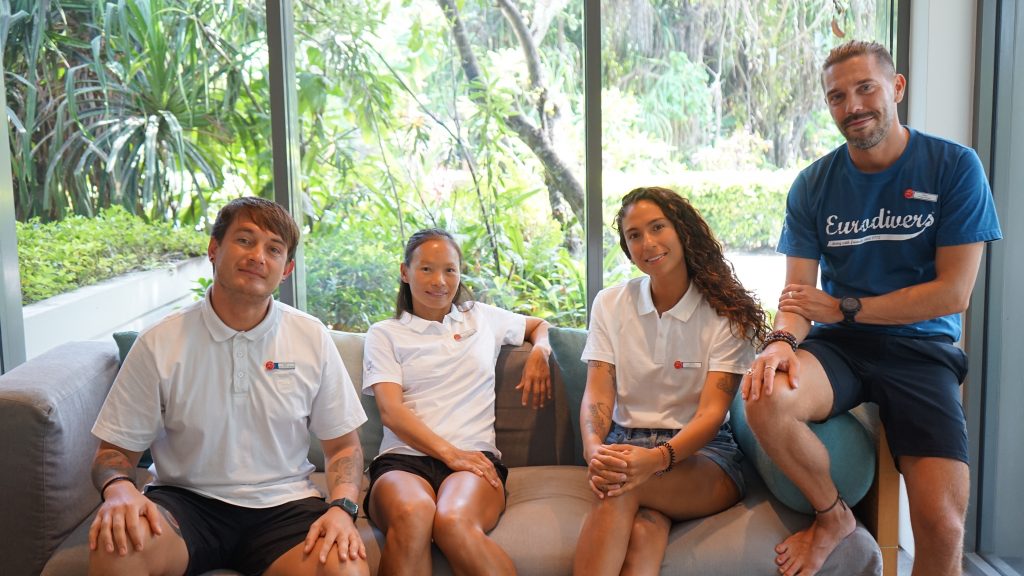
With their blend of international experience, scientific knowledge, and passion for marine conservation, the Euro-Divers team is perfectly placed to guide guests through unforgettable ocean adventures.
New and enriched offerings include enhanced eco-diving programs, guided marine biology sessions, tailored non-motorized watersports activities, and more beginner-friendly snorkel excursions with private guides, making the underwater world accessible to everyone.
Reflecting on what makes operating at Alila Kothaifaru Maldives in Raa Atoll so special, Igor shares, “The pristine reefs, rich biodiversity, and unique manta encounters make it a dream location. Every dive feels like a discovery, and sharing that with guests is incredibly rewarding.”
“Year after year, Alila Kothaifaru Maldives continues to deliver the experiences that make it a standout destination for ocean lovers,” says Thomas Weber, General Manager. “From awe-inspiring marine encounters to the guidance of our exceptional dive team, we are committed to inspiring discovery, adventure, and a lasting appreciation for the world beneath the surface.”
With manta season in full swing and spectacular wildlife sightings unfolding around the island, Alila Kothaifaru Maldives and its Euro-Divers team invite guests to discover the beauty and wonder of the Raa Atoll’s mesmerizing marine world.
Action
Denise Höfer returns to The Nautilus Maldives for four-day padel programme in March 2026

The Nautilus Maldives is set to welcome back Denise Höfer, Germany’s No. 1 padel player and a leading global ambassador of the sport, for a renewed edition of its Masters for Masters series, taking place from 25 to 28 March 2026. This four-day programme invites families, couples and players of every level to discover Padel as a joyful shared adventure, guided by one of the world’s most inspiring Padel athletes.
Padel has grown into a worldwide phenomenon, celebrated for its accessibility and its ability to bring people together. Fast, intuitive and inherently social, it is the perfect sport for parents and children, partners and friends. With its playful nature and quick learning curve, Padel creates rare moments where beginners and seasoned players can genuinely enjoy the game side by side.
In this spirit, The Nautilus presents a Padel Masterclass shaped by connection. Whether learning your first rally with your partner, watching your children gain confidence on the court, or joining a spirited group session with fellow travellers, the programme transforms play into an experience of shared joy and discovery.
Guests will train with Denise Höfer across a curated line up of classes. Tailored, on-demand experiences including Couples Escape, Family Fun, Cardio Padel and Padel × Wellness invite guests to hyper-personalise their journey, blending movement with mindfulness, and performance with light hearted enjoyment. Complimentary daily sessions feature a Group Masterclass and a Children’s Masterclass, each thoughtfully crafted to suit different learning styles and skill levels.
After energising mornings on the court, guests can retreat to Solasta Spa for treatments inspired by natural flow and deep release. Personalised massages, stretching rituals and ocean-influenced therapies provide a gentle counterbalance to the day’s activities, inviting both body and mind to settle into a state of restoration. The experience becomes a soothing rhythm of movement, rest and reconnection, perfectly aligned with the private island’s unhurried philosophy.
With just 26 ultra-luxury houses and residences in the Baa Atoll UNESCO Biosphere Reserve, The Nautilus offers the ideal setting for meaningful time together. Days unfold freely, guided not by schedules but by the simple desire to savour each moment. Whether learning a new skill as a family, sharing a playful match at sunset, or cheering one another from the sidelines, every experience becomes part of a memory shaped by spontaneity and warmth.
The Padel Masterclass with Denise Höfer invites guests to discover more than technique. It offers a chance to bond, to grow and to reconnect with the joy of learning something new together. At The Nautilus, this journey is shaped not by rules, but by the freedom to follow your own rhythm.
Denise Höfer, Germany’s No. 1 Padel Player, shares: “I’m thrilled to be returning to The Nautilus for this special edition of its Masters for Masters series. The Nautilus’s Padel court is truly one of my favourites in the world: it’s incredible setting and stunning lagoon views create an atmosphere unlike anywhere else. I can’t wait to share this unique experience with The Nautilus guests once again.”
Adan Gomez, General Manager of The Nautilus Maldives, adds: “We are delighted to welcome Denise Höfer back to our shores. Having an athlete of her talent and success return to our island is a true honour and offering our guests the rare opportunity to train with her makes this event genuinely exceptional.”
Event Details:
- Dates: 25 to 28 March 2026
- Location: The Nautilus Maldives
To learn more about Denise Höfer and this exclusive experience, please visit the resort’s website. To book your stay, please contact hello@thenautilusmaldives.com
Action
Siyam World achieves snorkelling world record with 307 participants

Siyam World Maldives has officially made global history. On December 5th, the island pulled off one of its boldest ideas yet, becoming the first resort on the planet to earn a Guinness World Records title for The Most People Snorkeling Simultaneously at a Single Venue. In partnership with Freedive Maldives, Siyam World rallied an incredible 307 snorkelers from guests, neighbors, and ocean lovers across the region, diving past the required 250 participant mark and turning the house reef into a spectacular sea of fins and fun. Guinness World Records officials flew in to verify every detail, and for the first time ever in the Maldives, every participant received an official Guinness World Records medal, making “Snorkel World 300” a milestone etched not only in record books but also in everyone’s memories.
The energy of the day embodied everything Siyam World stands for — a big, bold, anything-is-possible playground where imagination meets island life. The event was more than a record attempt; it was a celebration of marine life, community connection, and Siyam World’s adventurous DNA. The event aligned with Sun Siyam Resorts’ ongoing sustainability initiatives, encouraging guests and locals alike to appreciate and protect the natural beauty of the Maldives’ underwater world. It also served as a proud moment for the destination. As the first Guinness World Records medal ceremony ever held in the Maldives, the event spotlighted Maldivian hospitality, creativity, and ocean culture on a global stage.

“What a moment. Being the first resort in the world to set a Guinness World Records title is something we will always carry with pride, not just for Siyam World and Sun Siyam Resorts, but for the Maldives as well. We have never been the type to follow the usual path; doing the unexpected has always been our style. A huge thank you to everyone from the nearby islands who came together to make this possible,” said Ausy Waseem, Resort Manager, Siyam World.

If any resort was going to break a world record, it was always going to be Siyam World. From adrenaline-fueled adventures to quirky island experiences that spark global attention, Siyam World has earned its reputation as the Maldives’ most unrestrained, maximalist playground. This Guinness World Records title adds yet another chapter to its growing list of “only-at-Siyam” moments, proof that the resort is not just a place to stay, but a destination where the extraordinary is the everyday.
Siyam World now stands proudly as a Guinness World Records titleholder, an extraordinary accomplishment shared with the Maldives and the global travel community.
-

 Entertainment1 week ago
Entertainment1 week agoHulhumalé’ set for New Year festivities as Visit Maldives and partners launch preparations
-
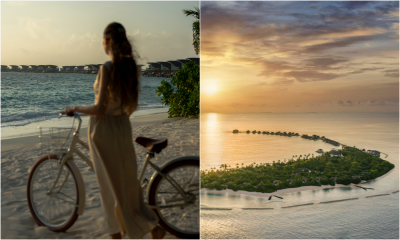
 News1 week ago
News1 week agoJW Marriott Maldives Resort & Spa introduces new island cycling experience
-

 News7 days ago
News7 days agoNH Collection Maldives Reethi Resort reopens after six-month renovation
-

 Action1 week ago
Action1 week agoA season of discovery at Alila Kothaifaru Maldives
-
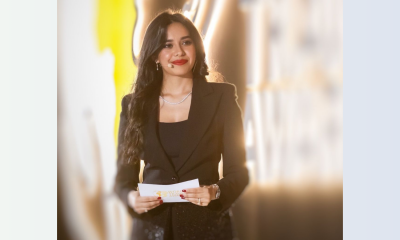
 News1 week ago
News1 week agoYasmeen Alsaeed to host Madifushi Private Island’s New Year’s Eve gala night
-

 News1 week ago
News1 week agoBarceló Nasandhura to host New Year’s Eve gala dinner with live music, fireworks views
-

 News7 days ago
News7 days agoJEN Maldives by Shangri-La to host New Year’s Eve celebrations with Kuala Lumpur giveaway
-
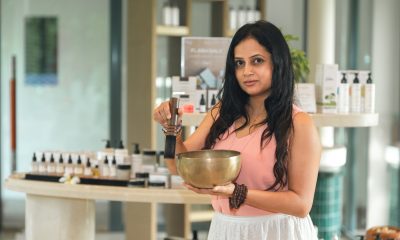
 News1 week ago
News1 week agoDr Aradhana Ghyas brings Shamanic rituals, energy work to SO/ Maldives this festive season











